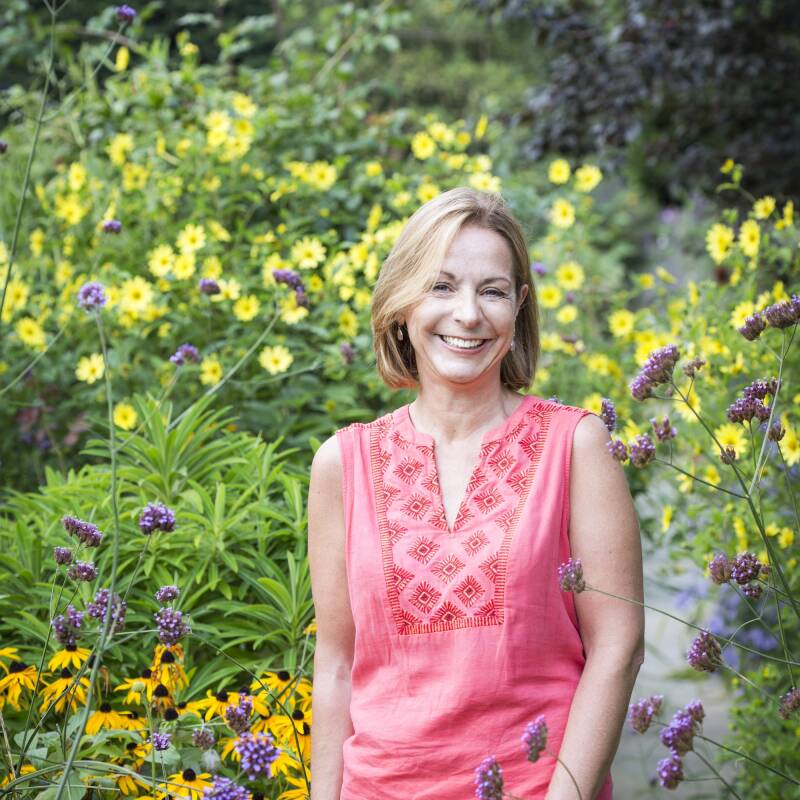I always learn something when I visit with Marc Hachadourian, the director of glasshouse horticulture and senior curator of orchids at the famed New York Botanical Garden (NYBG) and author of Orchid Modern (Timber Press, 2019). After attending the spectacular Orchid Show this year, I was eager to find out a little more about the orchids at the garden. Orchidaceae is one of the largest plant families on earth, with approximately 30,000 naturally occurring species in the wild, and more than 100,000 horticultural varieties due to extensive plant breeding and naming. “I have a job where I work at the intersection of science, education, and horticulture,” he says. “And at times, it’s nothing short of magical.” Here, Marc talks about what makes the NYBG’s collection so important and offers some basic orchid advice.
Photography courtesy of New York Botanical Garden.

What’s the glasshouse collection?
“We have essentially a living history of the institution in our glasshouse and orchid collection that we need to preserve for the future. This history may represent rare and unusual species and historic and venerable specimens. We work to conserve these rare plants, natural occurring species, and even rare hybrids that are not really found in cultivation anymore. It’s not just trees that are long lived, you know—there are many plants that can live decades, if not hundreds of years. So, a lot of what we do is stewardship, which is something that I always feel is important because I’m connecting to the past. I’m working with plants that were brought here by the founder of the New York Botanical Garden 120 or so years ago. I love that. And hopefully many of these plants will be here long after I’m gone.”



How does the NYBG help with orchid conservation?
“We have different approaches to conservation, but one of our most public programs is as a rescue center for endangered plants. We work with the US government through the Convention on International Trade in Species of Wild Fauna and Flora (CITES) rescue center program to rehabilitate plants that have been smuggled into the country, usually for sale on the black market. Many of these plants arrive to us in very poor condition. Rather than see them destroyed, we inspect them for any diseases that might be present and then give them the exact care and conditions to bring them back to their health and vigor. While these plants remain property of the US government, we are their stewards. We try to participate in a positive way to rescue and rehabilitate the plants and then use them for horticultural displays, research, and education, teaching our more than one million visitors a year. We also work with our garden scientists to document and catalog plants of the world.”


What advice can you give for growing orchids at home?
“First, start by finding orchids that like you, not just what you like. This goes for all plants, really. If you match the plants to your conditions, you’ll succeed—rather than readjusting your entire living environment for one plant. Look at your light, humidity, and how you water, and ask yourself: Are you a good plant parent or a bad one? There are a number of orchids that are easy to grow in the home. The two easiest to start with are Phalaenopsis and lady slippers. In many ways, orchids are survivors in nature. Many grow attached to the branches of trees, hanging in a tropical rainforest. They’re not being really coddled. In most cases, orchids are killed by overwatering rather than underwatering, so a little benign neglect goes a long way. Don’t be afraid of them, but also don’t baby them too much. A little tough love never hurts.” [Ed note: To learn more about orchids, read Marc’s book Orchid Modern (Timber Press, 2019).]



See also:
- Ask the Expert: How to Make An Orchid Bloom Again
- 10 Things Nobody Tells You About Orchids
- Orchids: Expert Advice from Susie Turner of Green Door Design













Have a Question or Comment About This Post?
Join the conversation (0)